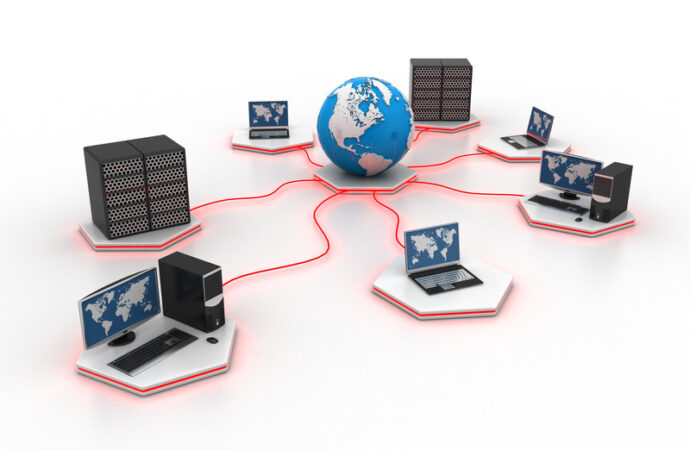Picture yourself relaxing at your go-to café, enjoying a warm latte while browsing websites on your laptop. Have you ever stopped to think about how you’re able to link to the Internet and access endless information within seconds? That’s the magic of computer networking. Computer networks have completely transformed how we interact and share data.
Picture yourself relaxing at your go-to café, enjoying a warm latte while browsing websites on your laptop. Have you ever stopped to think about how you’re able to link to the Internet and access endless information within seconds? That’s the magic of computer networking.
Computer networks have completely transformed how we interact and share data. They offer various benefits, including easier access to shared resources and enhanced efficiency. However, they also have certain drawbacks, such as potential security threats. That’s why it’s essential to develop a clear understanding of what computer networks are, along with their advantages and disadvantages.
What is a Computer Network?
A computer network refers to a system of interconnected devices, such as computers, servers, or other nodes, that share data and resources among them. These connections can be established through wired setups, such as Ethernet cables, or via wireless methods, including Wi-Fi. Once linked, the devices utilize communication protocols such as TCP/IP, SMTP (used for sending emails), and HTTP (used for loading web pages) to transfer information seamlessly.
The earliest known example of a computer network was ARPANET, developed in the late 1960s by ARPA. It introduced packet-switching technology and laid the foundation for today’s Internet.
Computer networks can vary in size from a simple link between two laptops using a cable to a vast, interconnected web of systems spanning the globe, such as the Internet itself.
Advantages of Computer Networks
Computer networks play an essential role in today’s digital world. It offers numerous benefits that enhance our communication, productivity, and resource management.
Enhanced Communication
One of the main advantages of computer networks is their ability to support communication effectively.
It allows users to connect instantly through tools like email, chat apps, and video calls.
This real-time interaction promotes teamwork, accelerates decision-making, and helps build stronger internal connections within companies and groups.
Resource Sharing
Computer networks enable easy sharing of devices, such as printers, scanners, and storage systems, among multiple users.
By enabling shared access, networks help reduce hardware costs and ensure better utilization of available resources. For example, instead of purchasing separate printers for each employee, a company can rely on a single shared unit to save money.
Efficient Data Management and Sharing
With centralized data storage on network servers, users with the right permissions can retrieve information from any connected location.
This setup not only maintains data consistency but also simplifies management tasks. It allows organizations to implement reliable backup systems and recovery strategies.
Enhanced Productivity
Computer networks play a key role in enhancing workplace efficiency by enabling smoother collaboration.
Team members can access shared files instantly, work on documents together in real time, and stay connected, no matter where they are.
This seamless workflow enables projects to move faster and allows businesses to deliver results more efficiently.
Scalability
One of the built-in strengths of computer networks is their ability to scale. Businesses can effortlessly expand their network by adding more users, devices, or applications without having to overhaul the entire system.
This adaptability enables companies to meet changing demands and maintain smooth operations during periods of growth or transition.
Cost-Effective Operations
Networking helps reduce overall expenses by centralizing shared resources and enabling remote work setups.
With fewer individual systems to manage and less need for physical office infrastructure, businesses can cut costs on equipment, space, and ongoing maintenance.
Enhanced Security
Although networking introduces potential risks, a well-secured network can actually enhance data protection.
With tools such as firewalls, data encryption, and user access controls, organizations can actively monitor threats and enforce security policies, thereby keeping sensitive data safe from breaches or unauthorized use.
Remote Access and Flexibility
As remote work becomes increasingly common, computer networks enable employees to access their work systems from virtually anywhere.
Tools like Cloud and Virtual Private Networks (VPNs) provide secure access to company files and applications, supporting flexible schedules and better work-life balance.
Centralized Management
Networking simplifies IT management by offering centralized administration of digital resources.
IT teams can oversee user permissions, manage software, and control data access from a single interface, reducing manual workload and ensuring smoother operations across the organization.
Support for Innovation
A robust network infrastructure lays the groundwork for adopting emerging technologies.
Whether it’s cloud computing, automation, or the Internet of Things (IoT), computer networks provide the foundation that businesses need to streamline processes, implement innovative solutions, and stay competitive in the digital world.
Disadvantages of Computer Network
Below are some of the key limitations associated with computer networks:
High Setup Costs: Setting up a computer network can be expensive, especially at the outset. The price of wiring, cabling, and necessary hardware can add up quickly, resulting in a high initial investment.
Spread of Viruses and Malware: A significant downside of networking is the ease with which malicious software can travel from one device to another, infecting multiple systems within the network.
Complex Network Management: Managing a large-scale network isn’t easy as it requires experienced professionals to monitor and maintain the system. Staff involved in network management often require specialized training to manage the infrastructure effectively.
Data Loss Risk: If the network crashes or experiences a failure, users may temporarily lose access to data or, in some cases, suffer permanent data loss.
Security Vulnerabilities and Hacking: Wide Area Networks (WANs) are especially prone to cyberattacks. Without strong security measures, such as firewalls and encryption, the system can be exposed to unauthorized access or hacking attempts.



















Leave a Comment
Your email address will not be published. Required fields are marked with *